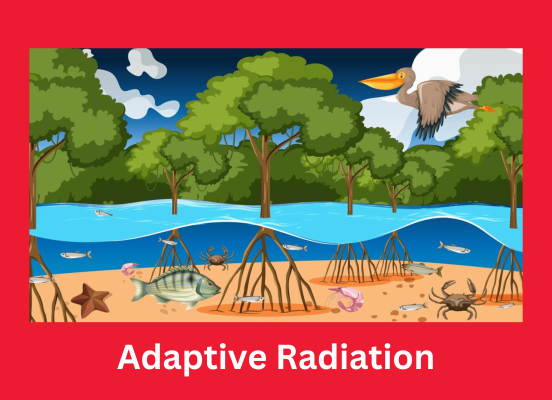
Adaptive Radiation: Explore how organisms diversify into multiple forms to exploit different ecological niches, often following significant environmental changes
- By admin --
- Tuesday, 12 Mar, 2024
Adaptive radiation is a captivating phenomenon observed in the natural world, where organisms undergo rapid diversification into multiple forms to exploit various ecological niches. This evolutionary process typically occurs following significant environmental changes, providing a compelling illustration of nature's capacity for innovation and adaptation.
At its core, adaptive radiation represents a response to the availability of new ecological opportunities. When environmental conditions shift, such as due to geological events, climatic changes, or the colonization of new habitats, organisms may face altered selective pressures. In such scenarios, certain traits or characteristics that were once advantageous may become less so, while others that were previously marginal may suddenly confer significant benefits.
The concept of ecological niches plays a fundamental role in adaptive radiation. A niche can be thought of as the ecological role of an organism within its environment, encompassing factors such as resource utilization, interactions with other species, and habitat preferences. When new niches emerge or existing ones become vacant, organisms with the appropriate traits may rapidly diversify to exploit these opportunities.
One classic example of adaptive radiation is the case of Darwin's finches in the Galápagos Islands. These finches, which descended from a common ancestor, diversified into multiple species with distinct beak shapes and sizes. Each species adapted to exploit different food sources on the various islands, ranging from seeds and insects to nectar and cactus pulp. This diversification occurred over relatively short evolutionary timescales, driven by the availability of diverse food resources and the absence of competing bird species.
Similarly, the cichlid fish of the African Great Lakes provide another compelling example of adaptive radiation. These fish have radiated into hundreds of species with diverse morphologies, behaviors, and ecological preferences. Different species occupy distinct habitats within the lakes, such as rocky shores, sandy bottoms, or open waters, and have evolved specialized feeding strategies to exploit available resources.
The Hawaiian Islands offer yet another fascinating case of adaptive radiation. The islands' isolated and dynamic volcanic environment has led to the evolution of numerous unique plant and animal species. Hawaiian honeycreepers, for instance, have diversified into a variety of forms adapted to feed on different parts of plants, including nectar, fruit, and insects. This radiation occurred as the birds colonized different habitats across the islands, leading to the evolution of distinct species on each island.
Several factors contribute to the success of adaptive radiation. Genetic variation within populations provides the raw material for evolutionary change, allowing organisms to explore new ecological possibilities. Additionally, key innovations or adaptations may arise, facilitating the exploitation of novel resources or habitats. For example, the evolution of wings enabled birds to exploit aerial environments, leading to the radiation of avian diversity.
Environmental factors also play a critical role in shaping adaptive radiation. Geological events, such as the formation of mountain ranges or the opening of land bridges, can create barriers to dispersal and promote speciation. Climate change can alter the distribution of habitats and resources, driving organisms to adapt or migrate to new areas. Furthermore, biotic interactions, such as competition, predation, and mutualism, can influence the trajectories of radiation by shaping the selective pressures acting on organisms.
Despite the remarkable diversity generated by adaptive radiation, it is not without constraints and trade-offs. Organisms may face ecological trade-offs, where adaptations for one niche may be detrimental in others. Additionally, genetic and developmental constraints may limit the range of possible evolutionary outcomes. Furthermore, once ecological opportunities are filled, further diversification may be constrained by competitive exclusion or niche saturation.
To sum up, adaptive radiation is a fascinating way of understanding the evolving dynamics of life on Earth. By taking advantage of fresh environmental niches, species can quickly evolve into many different shapes, indicating how innovatively nature chooses its best characteristics. Whether you are talking about Galapagos’ finches, African cichlid fish or Hawaiian honeycreepers.





